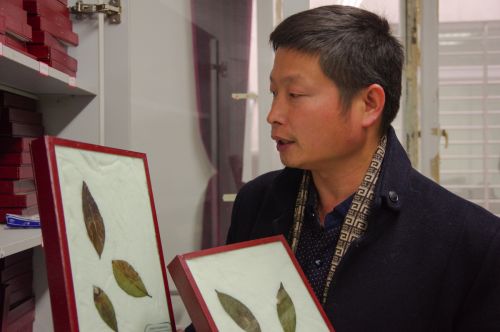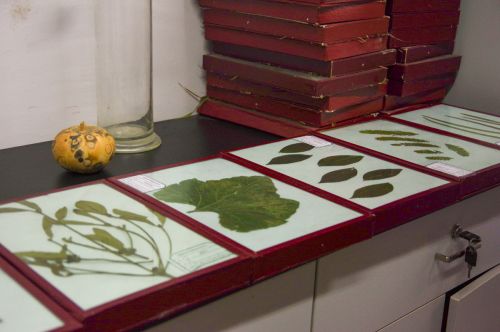“Look! There are black molds on the hackberry leaves, which may suffer the sooty blotch.” On Sunday, a group of students were observing leaves among hackberry trees in Shizishan Square. During the course-Garden Pests Specimen, guided by Xu Wenxing from the College of Plant Sciences & Technology, students learn to be “a plants’ doctor” by collecting samples according to brochures and listening to Mr. Xu’s explanation of plant diseases. This lively course set up due to innovative experiment teaching programs in HZAU can be chosen by students on the Internet.

Mr. Xu explained knowledge about specimen-making

Specimen works made in 2016
Mr. Xu provides students with more opportunities for going to nature. Mr. Xu spends much time identifying symptoms of pest diseases and collecting insect specimens with students on campus. In Mr. Xu’s view, nature is the best class and the pests on campus are the best textbooks. “A majority of students are unfamiliar with plant pests at the very beginning. But in the final of the course, they can recognize the pests around them by learning in nature. That is what we called applying learning into practice.” Mr. Xu said.
Mr. Xu said that each of these pest diseases’ is related to plants’ symptoms. For example, hackberry sooty blotch specimens found in Shizihan Square seem to be wiped by briquettes with large black smudges on the leaves. As the name suggest, Camellia sinensis leaf samples with ring disease can suggest you to imagine ring symptoms. “Different diseases require different treatments. We just act as a plants’ doctor who observes plants’ diseases and prepares the further treatments for insect pests surgery. ” He said.
It is one of the features in this course to collect samples in fields and greenhouses and then make specimens by the students. Deng Pu, from Tea Science 1501 class, said she got a lot of special tips when collecting insects and making specimens. “It is very interesting to chase insects with a net. Your eyes need to keep with them, and footsteps should be lighter and faster. It would be better if one could predict where they are going to fly.” When making the specimens, much more patience and perseverance is needed to seal the box and replace the blotting paper. She said that if one forgot to promptly replace the blotting paper, specimens may soon be filled with black molds and hard to preserve for a long time owing to inadequate dehydration of leaves. “I feel a sense of ritual when the team completes the whole process from picking and identifying of specimens to suppressing boxes, which is very meaningful.” She said.
Various kinds of specimens of plants damaged by insect pests are neatly placed in herbarium cabinets, in which a majority of specimens are made by students. “It is not only beneficial to the students in the course, but also other students who require the pests specimens.” Mr. Xu said with a smile. He also explained that students can’t observe all needed plants outdoors as limited by the season, and the fresh specimens made in this course can solve this problem.
http://news.hzau.edu.cn/2016/1206/47697.shtml
(By Chen Chunjia)
